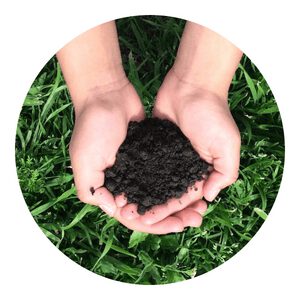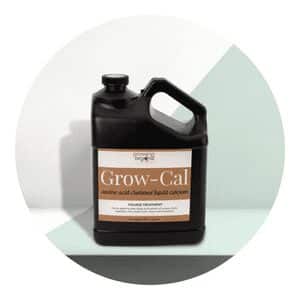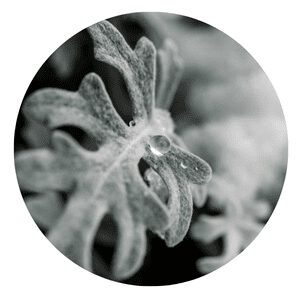Can Okra Grow in Pots?
Okra is a delicious and nutritious vegetable that is popular in a variety of cuisines.
It’s also one of the easiest vegetables to grow, so it’s no wonder many gardeners ask if okra can be grown in pots.
The answer is yes!
Growing okra in pots is possible and has many benefits, including portability and the ability to control the soil composition more closely than with a traditional garden plot.
Okra Menu
Benefits of growing Okra
Okra, also known as lady’s finger or gumbo, is a warm-season vegetable that is packed with health benefits.
Here are some of the benefits of growing okra:
Nutritional Value: Okra is a great source of vitamins and minerals, including Vitamin C, Vitamin K, Vitamin A, and folate. It is also a good source of dietary fiber, which can help support digestion and weight management.
Low in calories: Okra is low in calories and high in water content, making it a great food for weight loss.
Cardiovascular Health: Okra is rich in antioxidants, including polyphenols and flavonoids, which can help protect against cardiovascular disease and lower cholesterol levels.
Boosts Immune System: Okra contains high levels of Vitamin C, which is known to boost the immune system and protect against infections.
Anti-inflammatory properties: Okra contains compounds that have anti-inflammatory properties, which can help reduce the risk of chronic diseases such as diabetes and heart disease.
Easy to grow: Okra is a relatively easy vegetable to grow, even for beginners. It is a warm-season crop that is tolerant of heat and humidity, making it a great option for gardens in warmer climates.
Versatile: Okra is a versatile vegetable that can be used in a variety of dishes, including soups, stews, curries, and stir-fries. It can also be pickled or fried.
Fresh produce: Growing your own okra allows you to have fresh, healthy okra on hand whenever you need it. This can save you money on groceries and ensure that you are getting the freshest, most nutritious okra possible.
Environmental benefit: Growing your own vegetables can have a positive impact on the environment by reducing the carbon footprint associated with transportation and packaging of commercial produce.
Overall, growing okra can be a great way to add some healthy, delicious, and easy-to-grow vegetables to your garden.
Whether you’re looking for a nutritious addition to your meals, or simply want to enjoy fresh, homegrown produce, okra is an excellent choice.
Common misconceptions about Okra growth
Okra is a popular vegetable that is commonly used in many dishes.
However, there are some common misconceptions about okra growth that can lead to confusion and frustration among gardeners.
Can okra grow in pots?
One of the most common misconceptions is that okra can only be grown outdoors.
Although it does prefer full sun, okra can also be grown successfully indoors in containers with adequate soil drainage.
With proper care and maintenance, it’s possible to grow healthy plants both inside and outside your home.
Another misconception about okra growth is that it requires a lot of sunlight to thrive.
How To Grow Okra in Pots?
Growing okra in a pot is a great way to have fresh, healthy okra on hand, even if you have limited space in your garden.
Here are the steps to follow when growing okra in a pot:
Choose the right pot: Okra needs a lot of root space to grow, so make sure to use a pot that is at least 12 inches deep and 12 inches wide.
A 5-gallon container is the minimum size for a single okra plant.
Fill the pot with soil: Okra prefers well-draining soil that is high in organic matter.
Mix in some compost or aged manure to provide the necessary nutrients.
Plant the okra seeds: Sow the okra seeds about 1/2 inch deep and 2-3 inches apart in the pot.
Cover with soil and water well.
Provide support: Okra plants can grow tall and leggy, so be sure to provide them with a stake or trellis for support.
This will help the plants stay upright and produce more fruit.
Water regularly: Okra needs consistent moisture to grow well, so make sure to water your plants regularly.
A soaker hose or drip irrigation system can help keep the soil consistently moist.
Provide adequate light: Okra plants need full sun to grow well, so make sure to place the pot in an area that gets at least 6 hours of direct sunlight per day.
Fertilize: Okra plants need regular fertilization, especially during the flowering and fruiting stages.
Use a balanced fertilizer or a slow-release fertilizer to provide the necessary nutrients.
Watch out for pests: Okra is susceptible to pests such as aphids, spider mites, and whiteflies.
Keep an eye out for these pests and take appropriate action if necessary.
Harvest regularly: Okra is best when it is picked when it is young and tender.
Be sure to harvest your okra regularly to encourage the plant to produce more fruit.
With proper care and attention, you can successfully grow okra in a pot and enjoy fresh, healthy okra right from your own backyard.
Advantages of growing Okra in pots
Okra is an integral part of many traditional cuisines, and can be a great addition to any garden.
Growing okra in pots has several advantages that make it ideal for those who have limited space or live in colder climates.
Growing okra in pots offers the gardener more control when it comes to soil conditions, temperature and moisture levels.
The plants are better insulated against extreme temperatures than they would be if planted directly into the ground, which protects them from frost damage.
Additionally, because the container holds only a small amount of soil, it’s easier to maintain proper drainage and nutrient levels.
Plus, because the pot can be moved around as needed, positioning your plants closer or further away from other areas of the garden is much simpler than with ground-level planting.
I seek to replant in a pot this veggie, My goal's to see the okra thrive simply! To give it its due water and light, And trust fate to let our work take flight. We'll fertilize it with care each day, Be sure to harvest it in the month of May. It'll taste fresh and crisp off the vine, Our labors will bless us with a savory fine!
Chappy The Gardener
Size and type of pot
The size and type of pot you choose for your okra plants can have a huge impact on the success of your garden.
Growing okra in containers is a great way to make the most out of limited outdoor space, but it’s important to consider factors like drainage, light levels, and temperature before you decide on the right pot for your plants.
Knowing how deep and wide your container needs to be will ensure that your okra has plenty of room for roots to grow and for soil to absorb water.
When selecting pots for growing okra, look for materials like plastic or terracotta which are lightweight yet durable enough to withstand everyday use.
Make sure that each pot is equipped with at least one hole in the bottom to allow excess water to drain away; this is essential if you want healthy plants that avoid root rot due to stagnant moisture.
Soil, fertilizers, and water requirements
Soil, fertilizers, and water requirements are all important considerations when it comes to growing plants in pots.
Growing okra in particular requires special attention to ensure that plants get the right balance of nutrients they need for optimal growth and production.
The soil should be well-draining and rich in organic matter, such as compost or aged manure.
Adding a balanced fertilizer at planting time is recommended since okra needs plenty of nitrogen to grow large healthy leaves for photosynthesis.
Watering needs will depend on environmental conditions, but keep the soil consistently moist – never too wet or dry – for best results.
Overwatering can lead to root rot, so always check the soil with your finger before applying water if you’re not sure whether it needs moisture or not.
Care and maintenance
Okra needs plenty of sun and water.
Make sure your pot has good drainage so that excess water doesn’t sit at the bottom and rot the roots of your plants.
When watering, make sure to soak the soil thoroughly but don’t over-water as this can cause root rot.
Fertilizing once per month will help keep your okra plants healthy by providing them with essential nutrients they need to thrive in their new environment.
Regular pruning helps promote growth and keeps them looking neat throughout the growing season.
Problems and solutions
If you love okra, but don’t have the space for a traditional garden, growing okra in pots may be an option.
With the right soil, sunlight and water requirements met, it is possible to grow this delicious vegetable in containers.
To help you get started on this gardening endeavor, we dive into the problems and solutions associated with growing okra in pots.
First things first: okra must be planted after all danger of frost has passed and when nighttime temperatures remain above 60°F (16°C).
The planting container should also be large enough to accommodate the roots as they grow since okra can reach heights up to 10 feet (3 meters).
The most important factor when selecting a pot is drainage; choose one that has multiple drain holes at its bottom so excess water can escape easily.
Summary of growing Okra in pots
In order to successfully grow okra in containers, one must select the right type of pot and medium for planting.
The best types of containers are those with 3-5 gallon capacity, allowing enough space for the roots to spread properly.
Additionally, the container should have adequate drainage holes at the bottom so excess water can escape and not rot the roots.
Once an appropriate pot has been chosen, one must fill it up with a mixture of organic soil compost or potting mix for planting okra seeds or seedlings.
Tips and tricks for success
Growing okra in pots can be a great way to have fresh, healthy okra on hand, even if you have limited space in your garden.
Here are some tips and tricks for success when growing okra in pots:
Use the right size pot: Okra needs a lot of root space to grow, so make sure to use a pot that is at least 12 inches deep and 12 inches wide.
A 5-gallon container is the minimum size for a single okra plant.
Choose the right soil: Okra prefers well-draining soil that is high in organic matter.
Mix in some compost or aged manure to provide the nutrients the plants need.
Water regularly: Okra needs consistent moisture to grow well, so make sure to water your plants regularly.
A soaker hose or drip irrigation system can help keep the soil consistently moist.
Provide support: Okra plants can grow tall and leggy, so be sure to provide them with a stake or trellis for support.
This will help the plants stay upright and produce more fruit.
Keep an eye out for pests: Okra is susceptible to pests such as aphids, spider mites, and whiteflies.
Keep an eye out for these pests and take appropriate action if necessary.
Fertilize: Okra plants need regular fertilization, especially during the flowering and fruiting stages.
Use a balanced fertilizer or a slow-release fertilizer to provide the necessary nutrients.
Harvest regularly: Okra is best when it is picked when it is young and tender.
Be sure to harvest your okra regularly to encourage the plant to produce more fruit.
By following these tips, you can successfully grow okra in pots and enjoy fresh, healthy okra right from your own backyard.
How to Grow Okra in a Raised Beds
Growing okra in raised beds can be a great way to take advantage of the benefits of raised beds while also growing this nutritious and delicious vegetable.
Here are the steps to follow when growing okra in raised beds:
Choose the right location: Okra prefers full sun and well-draining soil.
Select a location that gets at least 6 hours of direct sunlight per day and that has well-draining soil.
Build the raised bed: Raised beds can be made from a variety of materials, including wood, stone, or bricks.
The key is to make sure that the bed is at least 12 inches deep and 12 inches wide.
Fill the raised bed with soil: Fill the raised bed with a mixture of topsoil, compost, and aged manure.
This will provide the necessary nutrients for the okra plants to grow.
Plant the okra seeds: Sow the okra seeds about 1/2 inch deep and 2-3 inches apart in the raised bed.
Cover with soil and water well.
Provide support: Okra plants can grow tall and leggy, so be sure to provide them with a stake or trellis for support.
This will help the plants stay upright and produce more fruit.
Water regularly: Okra needs consistent moisture to grow well, so make sure to water your plants regularly.
A soaker hose or drip irrigation system can help keep the soil consistently moist.
Fertilize: Okra plants need regular fertilization, especially during the flowering and fruiting stages.
Use a balanced fertilizer or a slow-release fertilizer to provide the necessary nutrients.
Watch out for pests: Okra is susceptible to pests such as aphids, spider mites, and whiteflies.
Keep an eye out for these pests and take appropriate action if necessary.
Harvest regularly: Okra is best when it is picked when it is young and tender.
Be sure to harvest your okra regularly to encourage the plant to produce more fruit.
By following these steps, you can successfully grow okra in raised beds and enjoy fresh, healthy okra right from your own backyard.
Raised beds can also provide an easier way to control the soil condition, drainage, and temperature for the plants, which can improve the overall yield.
Organic Ferilizer
Okra plants are heavy feeders that require regular fertilization to grow well.
Using organic fertilizers is a great way to provide the necessary nutrients while also improving the overall health of the soil.
Here are some types of organic fertilizer that are good for growing okra:
Compost: Compost is a rich, organic material that provides a wide range of nutrients to plants.
It is an excellent source of nitrogen, phosphorus, and potassium, which are essential for okra growth.
Manure: Manure is a great source of nutrients for okra plants. It is particularly high in nitrogen and phosphorus, which are essential for healthy growth.
Make sure to use aged manure, as fresh manure can burn the plants.
Fish Emulsion: Fish emulsion is a liquid fertilizer made from fish waste.
It is a great source of nitrogen and other essential nutrients for okra plants. It can be used as a foliar spray or added to the soil around the plants.
Bone meal: Bone meal is a fine powder made from crushed animal bones.
It is an excellent source of phosphorus, which is essential for healthy root growth and blooming.
Epsom Salt: Epsom salt is a natural source of magnesium and sulfur, which are essential for healthy plant growth.
It can be added to the soil or used as a foliar spray.
Seaweed: Seaweed is a natural source of many essential micronutrients, including potassium, nitrogen, and iron.
It can be used as a soil amendment or as a liquid fertilizer.
Azomite: Azomite is a mined mineral that is high in essential trace elements, including calcium, magnesium, and potassium.
It can be added to the soil or used as a foliar spray
It’s important to keep in mind that Okra plants need a balanced fertilizer, so it’s best to use a combination of different types of organic fertilizers to provide the necessary nutrients for healthy growth and production.
In conclusion, growing okra in a pot can be an enjoyable and rewarding experience.
It is very easy to start, as the plant only needs a pot, quality soil, and plenty of sunshine.
Plus, harvesting the fruits of your labor can be especially satisfying.
Furthermore, having a potted okra plant at home will provide you with an interesting conversation piece and may even inspire more people to expand their gardening skills.
With just a little bit of effort, you can have homegrown okra all summer long.
Click To Grow
Helps Us Grow – Share If You Like
















